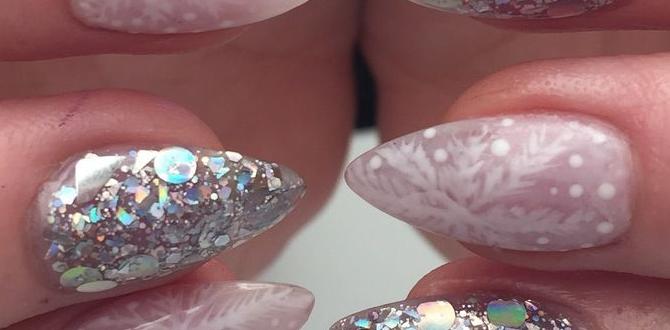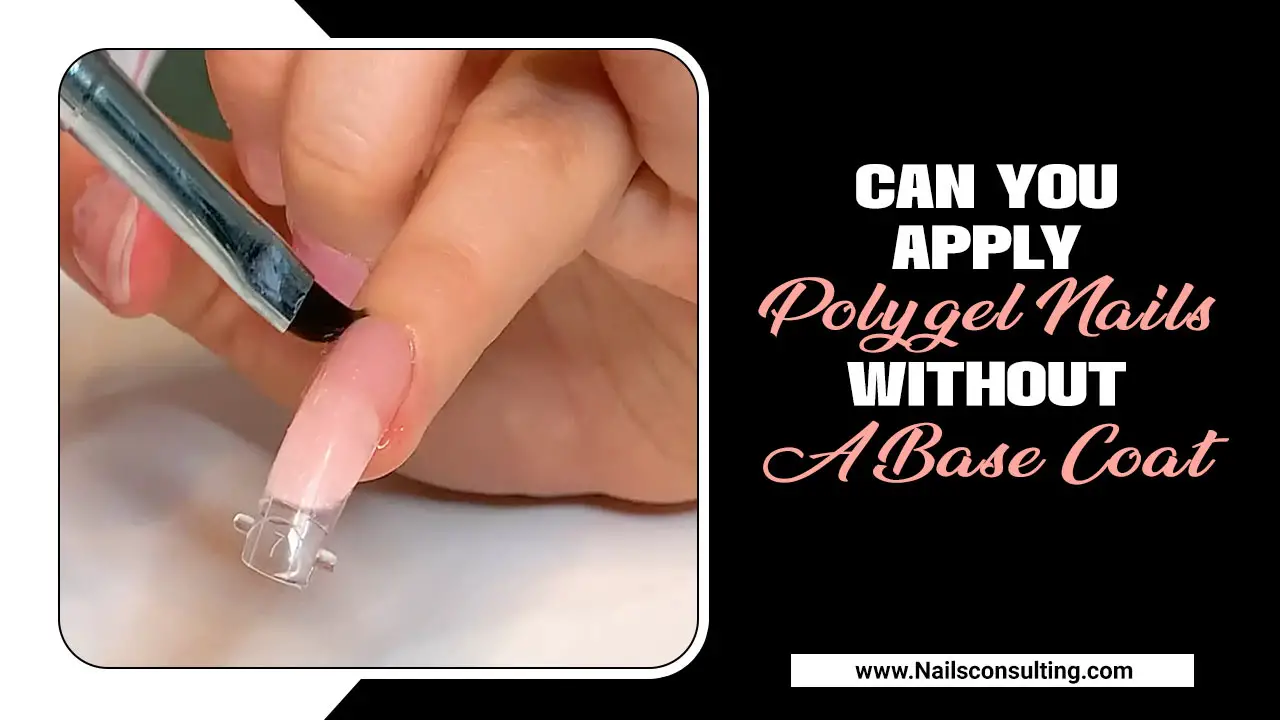Quick Summary: Master nail stamping plates with this easy guide! Get flawless, intricate designs by preparing your nails, choosing the right polish, using a stamper and scraper, and transferring the image cleanly. Follow our simple steps for salon-worthy nail art at home.
Ever look at someone’s nails and think, “Wow, how did they do that?” Nail art can seem super intricate, but what if I told you there’s a secret weapon for creating stunning, detailed designs with surprising ease? That’s where nail stamping plates come in! For many, the idea of perfectly placed lines, delicate flowers, or geometric patterns feels out of reach. You might have tried it before and ended up with a smudgy mess, leading you to believe it’s just too tricky. But don’t you worry! I’m here to show you exactly how to use nail stamping plates like a pro, turning those frustrating moments into fabulous creations. Get ready to unleash your inner nail artist and discover how simple it can be to achieve gorgeous, salon-quality nail art right at your fingertips.
Nail Stamping Plates: Your Gateway to Effortless Nail Art
Nail stamping is a revolutionary technique that allows you to transfer tiny, intricate designs from a metal plate onto your nails. Think of it like a mini stamp for your fingertips! This method is a game-changer for anyone who wants to add a touch of artistry to their manicure without spending hours freehanding designs. Whether you’re a complete beginner or looking to refine your skills, understanding how to properly use nail stamping plates can elevate your nail game immensely.
Why are Nail Stamping Plates So Amazing?
- Intricate Details: They let you achieve designs that would be incredibly difficult, if not impossible, to draw by hand.
- Speed and Efficiency: Once you get the hang of it, stamping is much faster than traditional freehand nail art.
- Variety: Plates come with endless patterns – from delicate lace and bold geometrics to cute characters and seasonal themes. You can build a whole collection!
- Affordability: Compared to professional salon nail art, stamping is a very budget-friendly way to achieve a high-end look.
- Consistency: Each stamp comes out identical, ensuring a perfect match across all your nails.
Essential Tools You’ll Need to Get Started
Before we dive into the how-to, let’s gather our supplies. Think of these as your trusty sidekicks for nail art success!
| Tool | Description | Why it’s important |
|---|---|---|
| Nail Stamping Plates | These are flat metal discs or squares etched with various designs. | The source of your beautiful nail art! Choose plates with designs you love. |
| Nail Stamping Polish | Opaque, highly pigmented polish specifically formulated for stamping. | Regular polish is often too sheer or dries too quickly. Stamping polish is thick and vibrant, ensuring a clean pickup. |
| Nail Art Stamper | A silicone-headed tool used to pick up the design from the plate. | The “stamp” itself! A good stamper needs to be slightly sticky to grab the polish. |
| Nail Art Scraper/Card | A plastic card or metal scraper to remove excess polish from the plate. | Essential for making the etched design stand out and preventing smudges when transferring. |
| Adhesive Lint-Free Wipes/Cotton Pads | For cleaning the plate and scraper. | Lint can transfer onto the plate and ruin your design. |
| Nail Polish Remover (Acetone-based works best) | To clean your plate, stamper (carefully!), and correct any mistakes. | Quick and effective cleaning. |
| Base Coat | A good quality base coat. | Protects your nails and provides a smooth surface for stamping. |
| Top Coat | A quick-dry or good quality top coat. | Seals the design, adds shine, and prevents chipping. |
| Optional: Clear Top Coat for Stamper | A standard clear top coat. | Some artists use this to clean their stamper without damaging the silicone head. |
Choosing Your First Stamping Plate
Don’t feel overwhelmed by the sheer number of plates available! For beginners, I recommend starting with plates that feature:
- Larger, bolder designs: These are more forgiving if your pickup isn’t perfect. Think solid shapes, simple patterns, or larger floral elements.
- Full-nail images: These can cover your entire nail with one stamp, which is great for beginners as you don’t need to worry about perfect placement on a small nail surface.
- Geometric patterns: Lines, dots, and checkerboards are classic and easier to execute cleanly.
A good starting point might be a geometric or simple floral design plate. You can find fantastic options from brands like Bundle Monster, Born Pretty, and MoYou London, all of which offer a wide variety of designs suitable for all skill levels.
Step-by-Step Guide: How to Use Nail Stamping Plates Like a Pro
Okay, let’s get stamping! Follow these steps closely. Practice makes perfect, so don’t worry if your first try isn’t flawless. Every stamper and polish combo can behave a little differently, so a little experimentation is key!
Step 1: Prep Your Nails
Just like any manicure, preparation is crucial for a lasting and beautiful result. Make sure your nails are:
- Clean: Free of oils and old polish. Wash and dry them thoroughly.
- Smooth: File them to your desired shape and buff any ridges.
- Polished: Apply a good quality base coat and let it dry completely. This protects your nails and gives the stamping polish something to adhere to.
- Painted: Apply your desired base color. This is the color you’ll see through the stamped design if the design isn’t fully opaque, or it can be a contrasting color that complements your stamped image. Make sure this color is completely dry before stamping! A fully dry base color prevents the stamper from pulling up the polish.
Step 2: Prep Your Stamping Plate
New stamping plates often have a blue protective film on top. Peel this off before you begin. It’s important to keep the plate surface clean and free of oils or lint, which can interfere with the polish pickup.
Step 3: Apply Stamping Polish
This next part happens quickly, so be ready!
- Select the design you want from your stamping plate.
- Generously apply your opaque stamping polish in a thick line directly over the etched design. You want enough polish to fill the etched lines completely. Don’t be shy – more is usually better than too little!
Step 4: Scrape Off Excess Polish
This is a critical step for a crisp image.
- Immediately after applying the polish, hold your scraper card or Kwik-Stripe card at about a 45-degree angle to the plate.
- With a quick, firm motion, swipe the scraper across the plate. The goal is to remove the excess polish from the surface of the plate, leaving polish only in the etched lines of your design.
- Do this swiftly. If you press too hard or too slowly, you can push the polish out of the etching or scrape through the design itself. A single, decisive swipe is usually best.
Step 5: Stamp the Design
Now for the magical part!
- Immediately after scraping, roll your stamper firmly but gently across the scraped design on the plate. A slight rolling motion is often more effective than a direct press, as it helps pick up the entire design evenly.
- You should see the design transferred onto the silicone head of your stamper.
- If you don’t get a full pickup, don’t worry! Clean the plate and try again. It might mean you needed slightly more polish, you scraped too hard, or you didn’t pick it up quickly enough.
Step 6: Transfer Design to Your Nail
This also requires speed and a steady hand!
- Line up the stamper over your nail.
- Gently roll the stamper across your nail surface, mirroring the motion you used to pick up the design. Again, a rolling motion is usually best. Avoid pressing straight down, as this can distort the image.
- The design should now be perfectly transferred onto your nail!
Step 7: Clean Up Mistakes and Seal
Don’t panic if you get polish on your skin or if the stamp isn’t perfect.
- Skin Cleanup: Dip a small brush (like a liner brush or an old makeup brush) or a cotton swab into nail polish remover. Carefully use it to clean up any stray polish around your cuticle and sidewalls. Be precise!
- Design Mistakes: If the stamp is smudged or incomplete, you can sometimes carefully pick it up with the sticky side of clear tape. If that doesn’t work, remove the polish with nail polish remover and start again from Step 3.
- Seal the Design: Once your stamped design is on the nail and any cleanup is done, apply a top coat. Use a quick-dry top coat for the best results. When applying the top coat, be gentle and try not to drag the brush too much, as this can smudge the delicate stamped design. A couple of thin coats are better than one thick one.
Step 8: Clean Your Tools
Proper cleaning extends the life of your tools and ensures they work perfectly next time.
- Stamping Plate: After each use, use a lint-free wipe soaked in acetone-based nail polish remover to clean the plate thoroughly. Make sure all polish is removed from the etched lines.
- Stamper: This is where you need to be gentle. You can try using a lint-free wipe with a tiny bit of acetone to lift the polish off the silicone. Alternatively, some people find using a sticky lint roller works well. Another popular method is to use a plain clear top coat: paint a thin layer of clear top coat onto the stamper head, immediately use a lint-free wipe to remove the polish and the clear top coat from the silicone head. This lifts the stamping polish without harsh chemicals. NEVER use pure acetone on the silicone head, as it can damage it. Some thicker silicone heads can withstand a quick wipe with acetone, but it’s generally safer to avoid it.
- Scraper Card: Wipe it clean with a lint-free wipe and nail polish remover after each use.
Troubleshooting Common Stamping Plate Problems
Even the most experienced nail artists run into issues sometimes. Here are some common problems and how to solve them.
| Problem | Possible Cause | Solution |
|---|---|---|
| Polish not picking up on stamper | Polish too thin, not enough polish applied, or scraping too late. | Use a dedicated stamping polish. Apply a generous amount. Scrape and stamp immediately. |
| Scraped design is not clean / faint lines | Scraping too hard, not hard enough, or wrong angle. | Use a medium pressure and a 45-degree angle. A single swift swipe is best. Experiment with your scraper and plate. |
| Design is smudged on nail during transfer | Stamper pressed too hard, or rolling motion was jerky. | Use a light, gentle rolling motion. Ensure the nail surface is completely dry. |
| Polish on skin | Imprecise stamping or scraping. | Use a cleanup brush dipped in remover for precision. Practice makes perfect! |
| Stamper not picking up design after multiple tries | Silicone head of stamper is dirty or oily. | Thoroughly clean the stamper using lint-free wipes with a small amount of acetone, or the clear top coat method. Ensure lint-free wipes are used. |
| Stamped design smudges when top coat is applied | Top coat is too thick or not quick-drying, or you’re dragging the brush. | Use a quick-dry top coat. Apply thin layers. Use a gentle dabbing or floating motion rather than brushing. |
Tips and Tricks for Next-Level Stamping
Ready to refine your technique and get even more creative?
- Practice on a Stamper or Nail Art Mat: Before going to your nail, practice the stamping process on a clear nail art mat or even the silicone head of your stamper. This is a great way to get a feel for the polish-to-scraper ratio and the speed needed without the pressure of doing it on your actual nail.
- Use a Clear Stamper: Clear stampers are amazing for precision. You can see exactly where you’re placing the design on your nail, making it much easier to position intricate patterns or to align designs for accent nails.
- Experiment with Color Combos: Don’t be afraid to try contrasting colors for your base and stamped design, or even try stamping with metallic polishes over matte finishes. The possibilities are endless!
- Layer Stamping: For super complex designs, you can stamp one image, let it dry, and then stamp another image on top. This opens up a whole new world of intricate art.
- Clean Stamps at the Edge: Sometimes, polishing the entire plate first before scraping can help fill the etching more cleanly, especially with very fine lines.
- Consider Nail Size: If you’re using a full-nail design and have very wide or long nails, you might need to use a stamper that can accommodate the full size or be prepared to creatively position it.
- The Power of a Good Top Coat: A good quality top coat is essential not just for shine but for protecting your intricate design. Check out reviewer favorites for long-wear top coats to ensure your masterpiece lasts. For instance, some nail professionals recommend top coats like Seche Vite Dry Fast Top Coat due to its ability to quickly seal and add a glossy finish, preventing smudging.
Stamping Over Different Nail Surfaces
You don’t have to stick to glossy finishes! Stamping can look amazing over:
- Matte Nails: Stamp a metallic or vibrant design over a matte base for a chic, contrasting effect.
- Glitters: Stamp a design (often in a dark color like black or navy) over a glitter base for added depth.
- Chrome Powder: Stamping over a chrome or mirror-finish nail can create a truly eye-catching look, especially with dark or holographic stamping polishes.
Remember, the key is often ensuring your base color is completely dry and free of oils before you begin stamping.
Understanding Stamping Polish vs. Regular Polish
While you can sometimes get away with using regular polish for stamping, it’s not ideal. Here’s why:
- Pigmentation: Stamping polishes are intensely pigmented. This means they have more color payoff and show up clearly even on dark base colors. Many regular polishes are too sheer.
- Consistency: Stamping polishes are formulated to be thicker and faster-drying on the plate. This quick drying on the plate surface is crucial for a clean pickup by the stamper, while still staying wet enough in the etched lines to transfer. Regular polish can dry too quickly on the plate or too slowly, leading to smudges.
- Opacity: Stamping polishes are designed to be opaque, ensuring the design is solid and not see-through.
Investing in a few good stamping polishes will make a world of difference in your stamping success and overall enjoyment. You can find excellent, affordable options from the same brands that offer plates.
Advanced Techniques to Explore
Once you’re comfortable with the basics, consider these advanced moves:
- Reverse Stamping: This involves stamping an image onto your stamper, then using a fine brush and nail polish (or polish remover) to “fill in” the design on the stamper itself. You then flip it over and apply it to your nail, creating a solid, colored image. This is how you get those filled-in, multi-colored designs. For a more in-depth look at reverse stamping, resources like Nail Art School often have tutorials demonstrating these techniques.
- Decal Stamping: Similar to reverse stamping, but you create a full decal on a non



